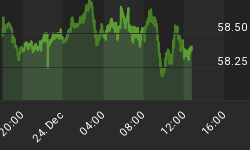During most of 2009, there was essentially just one currency story: the U.S. dollar. From March through the rest of the year, the dollar was relentlessly sold off as part of the Federal Reserve's "reflation" scheme, designed to save the financial markets (NOTE: I said the financial markets, NOT the economy) from a complete implosion.
Punctuated by the greenback's new role as the world's carry trade currency of choice, the scheme has thus far worked. The dollar declined for almost all of the year. Other currencies--and virtually all the so-called risk assets out there, from emerging market paper to commodities--rose.
One of my ANTI-predictions for 2010 that I released on New Year's Day was that 2010 would witness a decidedly different currency story. I believe the U.S. Dollar will rise for the foreseeable future for many reasons. Not the least of these is that it will benefit from troubles elsewhere. Indeed, once this year is over, I think we'll be compiling a short list of those currencies that did NOT have troubles during 2010.
At the moment, it's the euro's turn to be in currency traders' dog house. The common currency peaked at around $1.52 (per euro) back around the first of December amid some predictions that it was on its way to test its all-time high of around $1.60 against the greenback. Since then, the euro has unraveled spectacularly for a variety of reasons; chief among them are the implications of the debt troubles of euro members Greece, Portugal, Spain and Italy. Germans who used to enjoy the continent's strongest currency seem to be having their worst fears realized; their polygamous "marriage" to other European countries is serving, they'll be quick to tell you, only to risk destroying everyone's financial standing.
The dollar was already adding to its own upward momentum apart from the euro's woes. This was for two reasons. First--and the one most animating commentators this morning--was the win last night by Republican Scott Brown in Massachusettes' special election to fill the Senate seat of the late Ted Kennedy. Apart from the obvious fact that this takes away the Democrat Party's 60th seat, the broader message being taken from this by the markets is that President Obama will be less able everywhere (not just where health care is concerned) to act as though his ability to borrow and spend is unlimited. As a result, long-term interest rates continue their New Year's decline (another of my Jan. 1 ANTI-predictions) and the dollar's bid strengthens.
Reason No. 2 - China. That nation today has reportedly ratcheted up its efforts to curb lending in order to keep inflationary pressures from getting out of hand. Regulators there have now ordered some banks not to lend at all for the balance of the month. This has the markets hammering both stocks and commodities this morning, taking some of the steam out of the newest 15-month highs for the former. As a consequence, the dollar's rally this morning has turned white hot.
At least some of the dollar's strength of the last several trading days has come, as partly explained above, as a courtesy of other factors, rather than of traders' outright bullishness for the greenback (for example, as gold weakens and violates some traders' stop loss levels, it is sold, with some of the proceeds going into dollars.) But no matter how much we might argue with some over whether the dollar's move right now is more chicken or egg, a key test for the greenback's nascent cyclical rally looms.
Just before Christmas, the U.S. Dollar Index reached a level of around 78.5 before pulling back. It is moving back toward that level again. If it moves decisively (and closes) above that 78.5 level, it will be the newest confirmation that the greenback's secular bear trend HAS been interrupted by a cyclical bull market.
What might this mean? Well, until now, the dollar's new uptrend has not been sufficiently powerful or reliable to force many of the carry traders to flee their dollar-fueled risk trades. With stocks still hitting new highs and most commodities having briefly re-strengthened, I suspect that the majority of traders who have used borrowed dollars to place their bets have been little worried, given the still-bullish outlooks for emerging markets, commodities and the rest even if they were taking a modest "haircut" on their dollar positions.
But now the big picture might be changing in their minds. China--as I have often argued, most notably back in a key commentary in the November issue--has an interest in seeing commodity prices come down, and the U.S. dollar go up. The economic news in the U.S. continues to be uninspiring at best. Especially if the dollar re-confirms its cyclical bullish trend by moving above 78.5, the pain might finally become too great for carry traders to maintain their positions; and the domino effect of the carry trade's unwinding I've warned about might finally come about.
So--more than anything--I'm watching the Dollar Index right now. Its success (or lack thereof) in breaking higher will determine where we go from here.
















